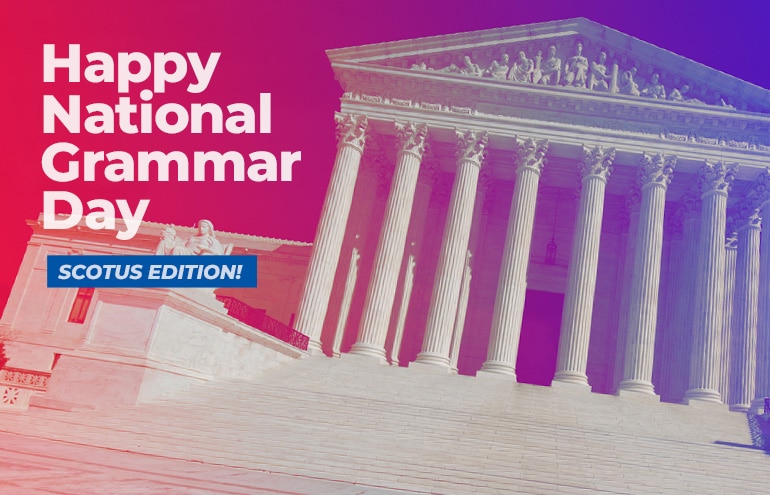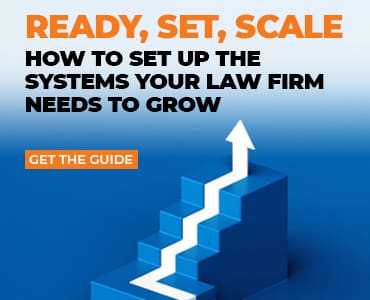Sometimes Get to the Point tells you about a new case where the result depended on a point of grammar. March 4th, National Grammar Day, is a good time to review some SCOTUS cases where grammar and usage dictated the outcome.

Vague, Vague, Vague
Clients pay us to advocate for them without creating loopholes. One lawyer brags on social media that he tells his clients that if a client ends up in court over a fight about what contract language means, then the lawyer didn’t do his job.
Nonetheless, we’ve all seen a plethora of cases where a court had to interpret parties’ intentions after the fact. Of greater impact is when courts must figure out the meaning of a statute.
For example, in Babbitt v. Sweet Home Chapter of Communities for a Great Oregon, 515 U.S. 687 (1995), SCOTUS had to interpret a provision of the Endangered Species Act. Plaintiff logging companies complained that protected bird habitats interfered with their ability to conduct their businesses. The court parsed the phrase “take any such species” where “take” was defined to include “harm.” Logical, right? The question then became whether destroying their habitats constituted harm to the species.
The majority concluded that the harm could be caused either directly or indirectly. Nests of the red-cockaded woodpecker and the northern spotted owl were spared.
Courts use dictionaries, examine legislative intent, and follow rules of statutory construction to decide cases. Their caseload would be cut down if only the drafters were not frequently so vague.
Commas Are Important — Or Not
The issue in United States v. Ron Pair Enterprises, Inc., 489 U.S. 235 (1989) was whether both certain consensual claims (e.g., arising from a contract) and certain nonconsensual claims (e.g., arising from a lien) were entitled to accrue interest after the date of a debtor’s bankruptcy petition. Relying on comma placement in the statute, the court held that the creditor was entitled to post-petition interest on a nonconsensual, oversecured claim.
For a grammarian, what’s really interesting about this case is Justice O’Connor’s dissent, which is a sermon about the effect of commas in legal text. She provides numerous quotations to show why comma placement should not be dispositive, such as, “Punctuation is a most fallible standard by which to interpret a writing….”
Check out her citations the next time you need to attack or defend the interpretation of squishy legal text.
See also: “The $4.85 Million Comma.”
Rule of the Last Antecedent
I wasn’t aware of this rule until recently, and now I see it frequently. The rule states that when multiple items are mentioned, a qualifying phrase at the end, known as a postmodifier, only applies to the last item. Applying the rule is often paired with an examination of comma placement.
Fifty-three-year-old Pauline Thomas was an elevator operator. Maybe you’ve never experienced an elevator where you had to rely on a human operator, but perhaps you’ve seen them in movies. Well, Pauline’s job was eliminated, and 10 months later, she applied for federal disability benefits due to heart disease and cervical and lumbar radiculopathy.
The statute says Pauline would be eligible for benefits “only if his physical or mental impairment or impairments are of such severity that he is not only unable to do his previous work but cannot, considering his age, education, and work experience, engage in any other kind of substantial gainful work which exists in the national economy.”
The administrative law judge found that Pauline was physically able to do her previous work.
She may have been able to work as an elevator operator, but technology marches on. There’s not much demand for Morse-code telegraph operators or ice block cutters either. If her job no longer existed in the national economy, and due to her age, education and work experience she could not get any other job, could she potentially qualify for disability benefits?
In Barnhart v. Thomas, 540 U.S. 20 (2003), SCOTUS reversed the Third Circuit decision in Pauline’s favor.
“The Third Circuit’s reading disregards—indeed, is precisely contrary to—the grammatical ‘rule of the last antecedent,’ according to which a limiting clause or phrase (here, the relative clause ‘which exists in the national economy’) should ordinarily be read as modifying only the noun or phrase that it immediately follows (here, ‘any other kind of substantial gainful work’).”
Other cases demonstrate that this rule is so controversial that drafters should avoid placing a modifier at the end of a string of items. Rather, put the modifier at the beginning of the list and consider repeating the modifier for each item if that would improve clarity.
The Grammar Day Lesson
If, despite your best efforts, you find yourself in a battle about how to interpret an allegedly ambiguous word or phrase, a dispositive comma, or a postmodifier, look at the line of cases that say grammar is only one of the interpretive aids a court should consider.
Author Angela Carter said, “Language is power.” Careful drafting, including precise word choice and adherence to grammatical rules no matter how seemingly arcane, will make you a better advocate. Proofreading is critical; software checkers won’t find everything. Read your work aloud before submitting it; it’s a good way to check for potential tonal pitfalls.
When you minimize the likelihood of questions arising later, you have done the best job for your client.

The “Get to the Point” Top 10
For more than a decade, we’ve published monthly posts about how to improve your communication skills. In honor of National Grammar Day, here is the countdown of the top 10 classic “Get to the Point” grammar posts.
10. Synonyms, antonyms, and homonyms, oh my!: “Sufferin’ Suffixes”
9. Parallelism: “Parallel Persuasion”
8. How to avoid convoluted sentence structure: “With, Not Who, for Things; Who, Not That, for People”
6. “About Your Love Affair with the Hyphen”
5. A Roman walks into a bar — and gets his plurals wrong: “A Roman Walks Into a Bar …”
4. As Shakespeare never said: “To Comma, Or Not to Comma: You May Be Getting It Wrong”
3. It’s not alright: “It’s the Word Most Often Used Incorrectly”
2. Try to (not “try and”) get this right: “To Infinitive and Beyond”
1. And the original “Get to The Point” grammar column: “Lawyers’ Top Three Grammar Goof-ups”
Image © iStockPhoto.com.

Sign up for Attorney at Work’s daily practice tips newsletter here and subscribe to our podcast, Attorney at Work Today.
















